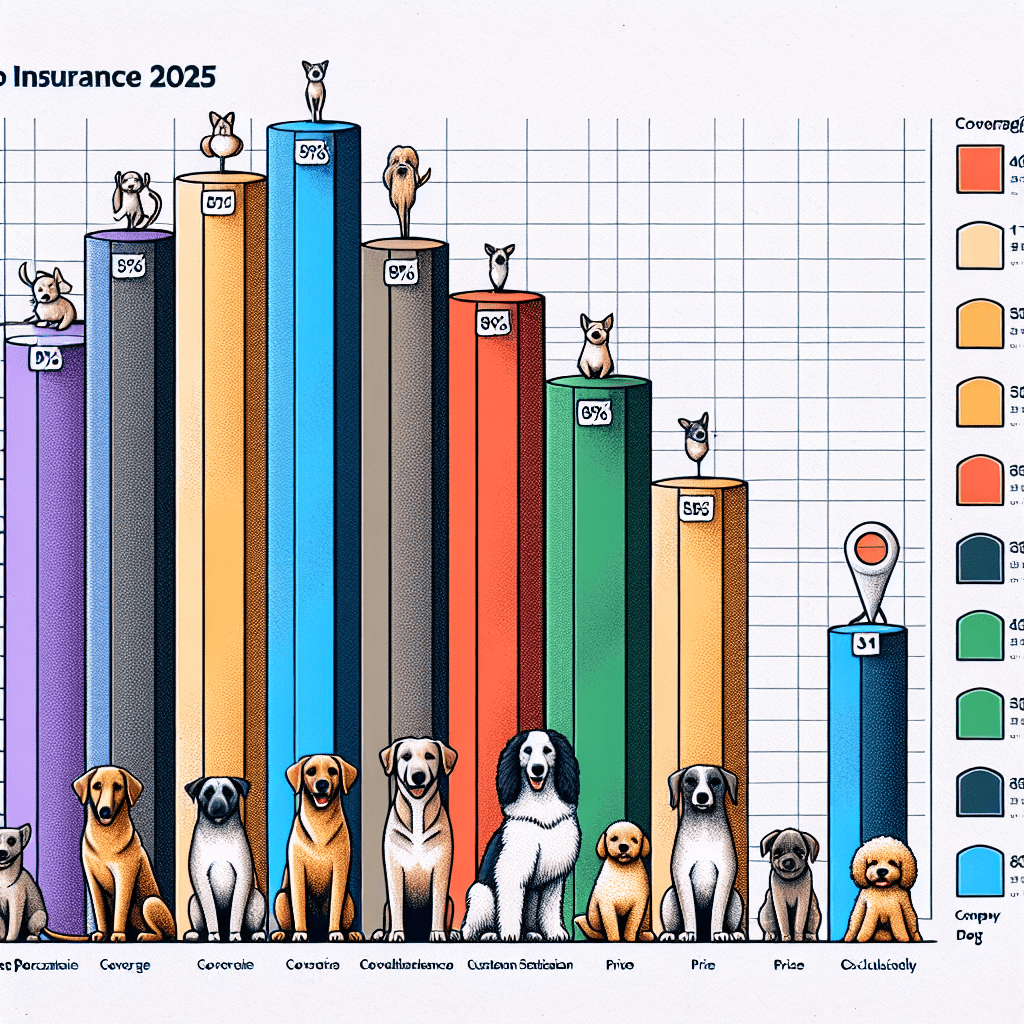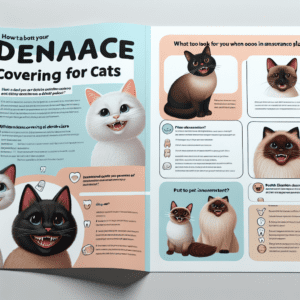“Find the Best Pet Insurance for Your Dog in 2025 – Compare Plans & Save!”
Top 5 Best Pet Insurance Plans for Dogs in 2025: A Comprehensive Comparison
As pet owners increasingly recognize the importance of comprehensive healthcare for their dogs, the demand for reliable pet insurance continues to grow. In 2025, several providers stand out for their coverage options, affordability, and customer satisfaction. To help dog owners make an informed decision, we have compared the top five pet insurance plans based on key factors such as coverage limits, reimbursement rates, deductibles, and additional benefits.
One of the most highly rated options is Healthy Paws, known for its straightforward policies and unlimited lifetime benefits. This plan covers accidents, illnesses, hereditary conditions, and alternative therapies without imposing annual or lifetime caps. Additionally, Healthy Paws processes claims quickly, often within a few days, making it a convenient choice for pet owners who need prompt reimbursements. However, it does not offer coverage for routine care or wellness visits, which may be a drawback for those looking for preventive care options.
Another strong contender is Trupanion, which distinguishes itself with a unique direct payment system to veterinarians. Unlike most providers that require pet owners to pay upfront and wait for reimbursement, Trupanion pays the vet directly, reducing financial strain during emergencies. The plan covers 90% of eligible expenses with no payout limits, making it an excellent choice for those seeking extensive coverage. However, Trupanion does not offer customizable reimbursement rates or wellness coverage, which may limit its appeal to some pet owners.
For those looking for a more flexible plan, Embrace Pet Insurance provides a range of deductible and reimbursement options, allowing pet owners to tailor their coverage to fit their budget. Embrace covers accidents, illnesses, and alternative treatments, and it also includes a diminishing deductible feature, which reduces the deductible amount each year a claim is not filed. Additionally, Embrace offers an optional wellness rewards program that reimburses routine care expenses, making it a well-rounded choice for those who want both preventive and emergency coverage. However, its annual coverage limits may not be sufficient for pets with chronic or severe conditions.
Another noteworthy option is Fetch by The Dodo, which offers extensive coverage, including dental illnesses, behavioral therapy, and holistic treatments. This plan is particularly beneficial for pet owners who prioritize comprehensive care beyond standard accident and illness coverage. Fetch also provides coverage for exam fees, which many other providers exclude. While its premiums can be slightly higher than some competitors, the breadth of coverage makes it a valuable option for those seeking extensive protection for their pets.
Finally, Spot Pet Insurance stands out for its highly customizable plans, allowing pet owners to choose from a variety of deductible and reimbursement options. Spot offers both accident and illness coverage as well as an optional wellness plan for routine care. One of its key advantages is the ability to adjust coverage levels to fit different budgets, making it an accessible choice for a wide range of pet owners. However, claim processing times can be longer compared to other providers, which may be a consideration for those who need faster reimbursements.
Ultimately, selecting the best pet insurance plan depends on individual needs, budget, and the specific health concerns of each dog. While some plans prioritize unlimited coverage and fast claims processing, others offer flexibility and wellness benefits. By carefully evaluating these top providers, pet owners can choose a plan that ensures their dogs receive the best possible care in 2025.
Affordable vs. Premium: Which Pet Insurance Plan is Best for Your Dog in 2025?

When choosing the best pet insurance plan for your dog in 2025, it is essential to consider both affordability and coverage. Pet insurance providers offer a range of plans, from budget-friendly options with basic coverage to premium policies that include comprehensive benefits. Understanding the differences between these plans can help pet owners make an informed decision that balances cost and protection.
Affordable pet insurance plans typically cover essential medical expenses, such as accidents, injuries, and some illnesses. These plans are designed for pet owners who want financial assistance in case of unexpected veterinary costs but do not require extensive coverage. Monthly premiums for budget-friendly plans are generally lower, making them an attractive option for those looking to manage expenses while still ensuring their dog receives necessary medical care. However, these plans often come with higher deductibles, lower reimbursement rates, and exclusions for pre-existing conditions or routine care.
On the other hand, premium pet insurance plans provide more comprehensive coverage, including wellness visits, vaccinations, dental care, and even alternative therapies such as acupuncture or physical rehabilitation. These plans are ideal for pet owners who want to ensure their dog receives the highest level of medical care without worrying about out-of-pocket expenses. While premium plans come with higher monthly premiums, they often feature lower deductibles and higher reimbursement rates, making them a valuable investment for those who prioritize their pet’s long-term health.
One of the key factors to consider when comparing affordable and premium pet insurance plans is the level of financial protection they offer. Budget-friendly plans may be sufficient for young, healthy dogs with minimal medical needs, but they may not provide adequate coverage for older pets or breeds prone to hereditary conditions. In contrast, premium plans offer broader protection, which can be particularly beneficial for dogs with chronic illnesses or those at risk for genetic disorders.
Another important consideration is the flexibility of coverage. Some affordable plans have strict limitations on covered treatments and may exclude certain conditions altogether. This can be a concern for pet owners who want the freedom to choose the best possible care for their dog. Premium plans, however, often provide more flexibility, allowing pet owners to seek specialized treatments and advanced medical procedures without worrying about coverage restrictions.
Additionally, the claims process and reimbursement structure can vary between affordable and premium plans. Budget-friendly options may have longer processing times and lower reimbursement percentages, which could result in higher out-of-pocket costs. In contrast, premium plans often offer faster claims processing and higher reimbursement rates, ensuring that pet owners receive financial support more quickly.
Ultimately, the best pet insurance plan for your dog in 2025 depends on your budget, your pet’s health needs, and your willingness to invest in comprehensive coverage. While affordable plans provide basic protection at a lower cost, premium plans offer extensive benefits that can be invaluable in the long run. By carefully evaluating the coverage options, deductibles, reimbursement rates, and exclusions, pet owners can select a plan that provides the right balance of affordability and protection for their furry companion.
Key Features to Look for in the Best Dog Insurance Plans of 2025
When selecting the best pet insurance plan for dogs in 2025, it is essential to consider several key features that can significantly impact coverage, cost, and overall value. As veterinary care continues to advance, ensuring that a policy provides comprehensive protection against unexpected medical expenses is more important than ever. To make an informed decision, pet owners should evaluate factors such as coverage options, reimbursement rates, deductibles, exclusions, and additional benefits that may enhance the policy’s value.
One of the most critical aspects of any pet insurance plan is the scope of coverage. The best policies offer extensive protection, including accident and illness coverage, which ensures that dogs receive necessary medical care in the event of an injury or sudden health condition. Some plans also include coverage for hereditary and congenital conditions, which can be particularly beneficial for breeds prone to specific genetic disorders. Additionally, policies that cover chronic conditions, such as diabetes or arthritis, provide long-term financial relief for pet owners managing ongoing veterinary expenses.
Beyond basic coverage, reimbursement rates and deductibles play a crucial role in determining the affordability of a plan. Most pet insurance providers offer reimbursement options ranging from 70% to 90% of eligible veterinary costs. Choosing a higher reimbursement rate can reduce out-of-pocket expenses, but it may also result in higher monthly premiums. Similarly, deductibles—whether annual or per-incident—affect the overall cost of the policy. A lower deductible typically leads to higher premiums, while a higher deductible can make monthly payments more affordable but may require greater upfront costs when filing a claim.
Exclusions and waiting periods are also important considerations when comparing pet insurance plans. Many policies exclude pre-existing conditions, meaning any illness or injury diagnosed before enrollment will not be covered. Some insurers, however, offer limited coverage for curable pre-existing conditions if the pet remains symptom-free for a specified period. Additionally, waiting periods for coverage to take effect vary by provider, with some policies requiring a few days for accident coverage and several weeks for illnesses. Understanding these limitations can help pet owners avoid unexpected gaps in coverage.
Another valuable feature to look for in a pet insurance plan is wellness and preventive care coverage. While not always included in standard policies, some insurers offer optional add-ons that cover routine veterinary visits, vaccinations, dental cleanings, and parasite prevention. These benefits can help pet owners manage the cost of regular care and ensure their dogs remain healthy throughout their lives.
Furthermore, policy flexibility and customer service should not be overlooked. The best pet insurance providers offer customizable plans that allow pet owners to adjust coverage levels, reimbursement rates, and deductibles to suit their budget and needs. Additionally, a provider with a strong reputation for customer service, easy claims processing, and fast reimbursements can make a significant difference in the overall experience.
Ultimately, choosing the best pet insurance plan for dogs in 2025 requires careful consideration of these key features. By evaluating coverage options, reimbursement rates, deductibles, exclusions, and additional benefits, pet owners can select a policy that provides financial security and peace of mind. With veterinary costs continuing to rise, investing in a comprehensive insurance plan ensures that dogs receive the best possible care without placing undue financial strain on their owners.
















